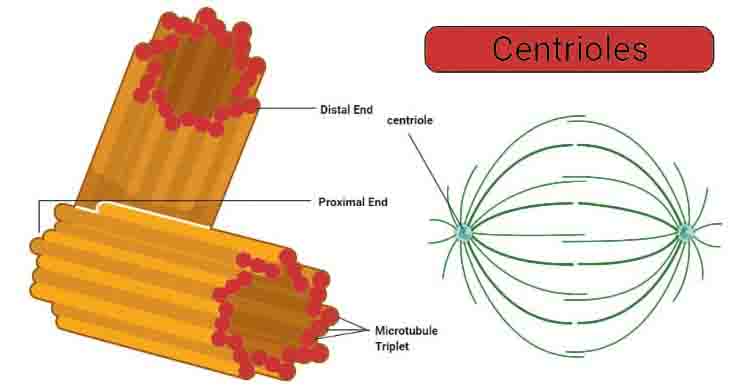Centriole Definition
A centriole is a small structure made of microtubules which exists as part of the centrosome, which helps organize microtubules in the body. A centriole is the main unit that creates and anchors microtubules in the cell. Typically, a eukaryotic cell has one centriole that is at a right angle to a second centriole in the centrosome.
Microtubules extend from the each centriole, and use the centriole as an anchor for the base of each microtubule. Each cell may have hundreds or thousands of microtubules that extend to various parts of the cell. During normal cell functions, motor proteins attach to both the microtubules and an item to be transported.
The motor proteins crawl along the microtubules, dragging whatever substance or compartment with them. Not all cells contain centrioles, and other methods are used for creating microtubules.
Function of a Centriole
Cells form a complex endoskeleton of microtubules which allows substances to be transported to any location in a cell. Products are tagged with special glycoproteins (sugar and protein) which act as signals to specific motor proteins. These proteins attach to the product, or vesicle that the product is stored in, and also attach to a microtubule.
Microtubules are arranged at the centriole, of which each centrosome has two. The centrioles anchor the microtubules that extend from it and contain the factors needed to create more tubules.
During mitosis, centrosomes are replicated by duplicating each centriole. The 4 centrioles then divide into two centrosomes, each with one centriole at a right angle to the second centriole. Microtubules extend between the centrosomes which push the sets of centrioles apart.
The centrioles will be pushed apart, to opposite ends of the cell. Once established, each centriole will then extend microtubules into the cytoplasm that seek out chromosomes. The microtubules attach to the chromosomes at their centromeres, which are parts of the DNA specially formulated to allow the attachment of special proteins and microtubules.
The microtubules are then disassembled from the centriole, which draws the microtubule back toward the centriole, as motor proteins pull the chromosomes apart.
Structure of a Centriole
A centriole is made of nine sets of microtubules, each in groups of three known as triplet microtubules. Triplet microtubules are very strong because they are composed of three concentric rings of microtubules that form together. Triplet microtubules are seen in other strong microtubules structures, such as the basal bodies of cilia and flagella.
Each triplet is bonded together by special proteins that give a centriole its shape. Surrounding the triplet microtubules is a amorphous material called pericentriolar material, which contains many of the molecules necessary for the construction of microtubules.
Each microtubule in a triplet is made up of small units of tubulin, a small monomer that can join together to create long, hollow tubes that resemble straws.
Related Biology Terms
- Microtubule-organizing Center – A centrosome during mitosis, when a large microtubule network is created.
- Centrosome – The center for microtubule activity in a cell, which consists of two centrioles.
- Centromere – The portion of a chromosome which can be attached to by microtubule associating proteins.
- Kinetochore – The specific region within a centromere that has the ability to form bonds with other molecules.

